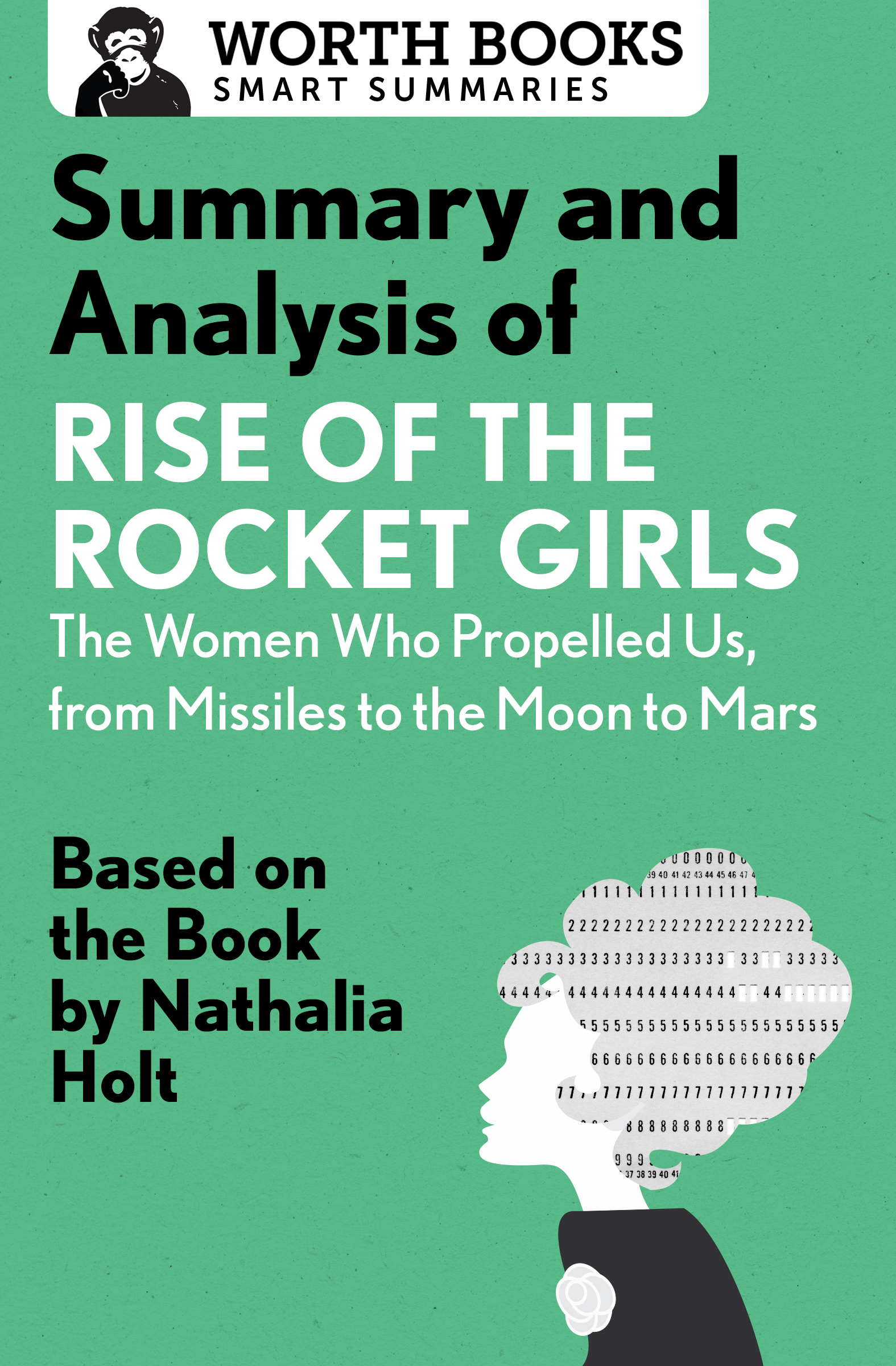Summary and Analysis of
Rise of the Rocket Girls
The Women Who Propelled Us, from Missiles to the Moon to Mars
Based on the Book by Nathalia Holt

Contents
Context
In March 2017, the NASA Authorization Act was renewed for the first time since 2010, guaranteeing the associations ability to continue exploring space under the guidance of the US government. The acts renewal comes in the midst of a period of social upheaval in the United States, particularly when it comes to gender politics. Events such as the Womens March on Washington have mobilized millions of people to stand up for womens rights and gender equality and to call out industries and professions that are failing to cultivate a diverse, equally paid workforce.
NASA is not immune to gender issues. While most well-known astronauts and rocket scientists are men, women have served as the backbone of Americas space agency since long before digital computers were capable of doing advanced mathematical calculations. Now, books and films such as Hidden Figures , which was nominated for the Academy Award for Best Picture and grossed more than $200 million, are starting to call attention to the female computers who have played important roles in missile and rocket launches since the 1940s.
In Rise of the Rocket Girls: The Women Who Propelled Us, from Missiles to the Moon to Mars , author Nathalia Holt tells the story of the women who worked for the Jet Propulsion Laboratory (JPL), a NASA lab founded in Pasadena, California, in 1936. Holt found that JPL had been a sort of hub for young women who excelled in math and science but had little hope of finding positions outside of teaching, nursing, or secretorial work. Early trajectory calculators, such as Macie Roberts and Helen Ling, sought to hire other female employees, nurturing the careers of women would go on to become some of the fields first computer programmers and female engineers and make crucial contributions to projects including the Deep Space Network, Voyager , and Mars missions.
Rise of the Rocket Girls is an engaging account that details the accomplishments of JPLs female employees, finally giving the women the recognition that they deserve.
Overview
In the 1930s, rocketry still walked a fine line between being a field of scientific study and being thought of as science fiction. Members of groups such as the Suicide Squad, a collection of researchers who performed explosive and damaging experiments on Caltechs campus, risked being written off as mad scientists or just plain unprofessional. Over the next three decades, however, the scientific community relented as rocket scientists proved the real possibilities of their work time and again. But that community remained much more resistant to another, larger group: women.
Generally limited to the career options of secretary, teacher, nurse, or housewife, women were rarely granted positions in scientific fieldsor even allowed to pursue the education that would qualify them for such positions. Perhaps it was this shared outsider status that brought women with gifts for math and science to the newly founded Jet Propulsion Laboratory (JPL). In Rise of the Rocket Girls: The Women Who Propelled Us, from Missiles to the Moon to Mars , Nathalia Holt delves into the unsung history of the women who were hired to work as computers for JPL. Before the development of machines bearing the same name, these women processed all of the labs raw data through handwritten calculations in their notebooks.
When Macie Robertsone of JPLs early hiresbecame supervisor of the computer lab, she used her authority to hire only women for her team, fostering a strong, supportive group of female mathematicians that would grow to include Barbara Paulson, Helen Ling, Sue Finley, and Sylvia Lundy. As JPLs projects changed and grew from developing missiles and satellites to completing moon landings and planetary exploration, the womens roles and abilities grew with them. These women were the first to learn computer programming on early IBMs, they went to night school to obtain advanced degrees, and they ultimately received recognition as full-fledged engineersall while balancing marriages and children, too.
During the past seventy years, the women who helped build JPL have contributed to creating the worlds first rocket-powered airplane; launching the United States first satellite; sending Voyagers 1 and 2 to collect photos and data from Jupiter, Saturn, Neptune, and Uranus; building the Deep Space Network; and putting rovers on Mars, among other things. Most of the women have retired by now, but one, eighty-year-old Sue Finley, continues their legacy.
Summary
Preface
In 2010, author Nathalia Holt was pregnant and searching for the perfect name for her daughter. After tentatively settling on Eleanor Frances, she researched the name and came across Eleanor Francis Helin, a scientist who had worked for NASAs Jet Propulsion Laboratory (JPL) beginning in the 1950s and had discovered more than eight hundred asteroids and comets over the course of her career. Holt, a scientist herself, was both pleased to find such a namesake for her daughter and intrigued by the womans career in rocket science, a male-dominated field. She dedicated herself to learning more about Helin and the other women who worked for the Jet Propulsion Lab in its early days.
Need to Know: Eleanor Francis Helin passed away in 2009, so Holt was unable to speak with her, but much of the personal information in Rise of the Rocket Girls comes from the authors interviews with scientists profiled in the book.
January 1958: Launch Day
An unnamed female computer (someone who did calculations by hand before the age of electro-mechanical computers) and the rest of the team at JPL wait nervously for their satellite, launched earlier that day, to go into orbit. If it makes it out of the atmosphere and begins to circle the planet, their device will be the first American satellite in space. After sixteen hours of waiting and calculating, the unidentified woman determines that the satellite has reached a high enough point in its trajectory to exit the atmosphere, a beep detecting its signal confirms her math, and the team celebrates their victory.
Need to Know: The American team at JPL was desperate for their satellite launch to succeed because the USSR was ahead in the Space Race, having launched Sputnik the year before.
Part I: 1940s
Chapter 1: Up, Up, and Away
In the 1930s, Barby and Richard Canright eloped and moved to Pasadena, California, where Barby attended classes at Occidental College and worked as a typist while Richard worked toward his graduate degree at the California Institute of Technology (Caltech). On Caltechs campus, they met and became friends with Jack Parsons, Frank Malina, and Ed Forman, a group of young scientists who formed what was known as the Suicide Squad. Some of the United States earliest rocket experimenters, the group earned its name by igniting explosives that endangered themselves and other studentsand caused extensive property damage.
Eventually, the group got kicked off the Caltech campus, but by then, they had attracted the attention of the US government. In 1939, they received a $1,000 grant from the National Academy of Sciences, then $10,000 from the Army Air Corps to help fund rocket plane research. With these resources, the group was able to hire employees, including Richard and Barby, the latter becoming the first female computer for the future Jet Propulsion Laboratory.










